|
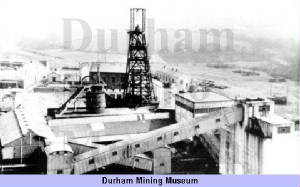
EAST HETTON COLLIERY
(sometimes
known as Kelloe Pit)
Coxhoe Pit later known as East Hetton
Colliery was opened in 1836 by the East Hetton Coal Company and was later owned by Walter Scott Ltd. Another shaft was sunk at Kelloe in 1856 by the Robson & Jackson Coal Company. Prior to Nationalisation the Colliery was owned by East Hetton Collieries Ltd. It was closed in 1983 due
to the danger of flooding. George Pritchard (b1842) left Wales in 1865 to work at the pit.
Link to "George Pritchard, Miner"
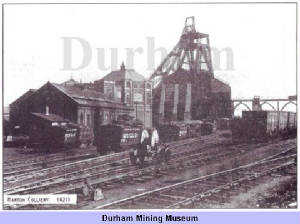
HARTON COLLIERY
(South Shields)
Harton
Colliery was opened in 1844 by the Harton and Hilda Coal
Company as a downcast to the St Hilda's Colliery.
An outlying
shaft
was opened at Westoe in 1909/11. In 1930 the pit had a
manpower of 2007 but in 1940 the number had fallen to 1,101 and
the colliery
closed ‘due to financial problems’ in 1969. George Pritchard (b1842) and his sons worked
at this colliery during the late 1800s and early 1900s.
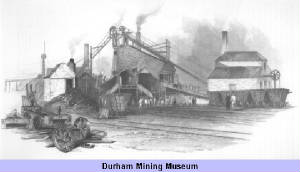
St HILDA'S COLLIERY
(South Shields)
The colliery was opened in 1805 by Robert and John William Branding as the Templeton Shaft (east of Jarrow Slake) and was also known as
the Manor Wallsend Pit and Chapter Main. It became St Hilda in
1825 and passed into the ownership of Wood
Blackett and Co. It was
later owned by the Harton Coal Company along with
Whitburn, Harton and Boldon
collieries. An explosion on 28th June 1839 killed fifty one men
and boys. The pit closed in 1940.
George Pritchard (b1842)
and his sons worked at this colliery at various times during the late 1800s
and early 1900s.
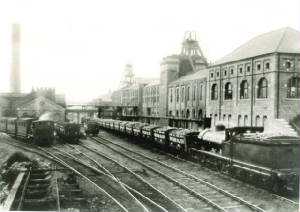
WHITBURN COLLIERY
Whitburn Colliery shaft was sunk in 1874 by the Whitburn Coal Company. The colliery went into production
in 1879 and was purchased by the Harton Coal Company in 1891. The colliery was closed due to geological problems and financial losses on 31st May 1968.
A
colliery railway line (South
Shields, Marsden
& Whitburn Colliery
Railway) ran
from South Shields through Harton to Whitburn and carried passengers as well as miners. It was the first
passenger railway line to be nationalised in 1947
(becoming the property of the National Coal Board) and was closed on 23rd November 1953. Robert
Pritchard (1868) began work at this colliery in 1880 at the age of 12.
"Link to Robert Pritchard, Miner"
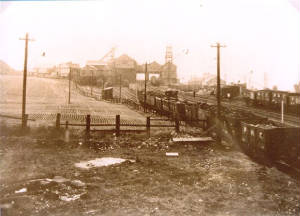
BETTY PIT
RAVENSWORTH
(later
known as Team Colliery)
The Betty Pit opened in 1726 and was owned by Squire Burdon of Hartford Hall, Northumberland. The earliest
pit disaster was reported at Ravensworth in 1757 when sixteen people
lost their lives in an explosion.
In the 1850s the pit was owned by E.M. Perkins (subsequently
Pelaw Main Collieries Co. Ltd.) A strike was reported at 'Ravensworth Colliery' in 1864. The pit later became known as Team Colliery
and was eventually merged with the Ravensworth Ann and closed in 1973. Robert Pritchard (1868) and his sons, George
(1897), William ( 1903), Daniel (1905)
and Edward (1907) all worked at this colliery at various times in the
first half of the twentieth century.
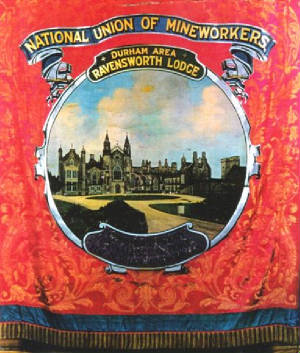
National Union of Mineworkers
Ravensworth Lodge Banner
(Robert Pritchard (1897) was Lodge Chairman
during the 1920s
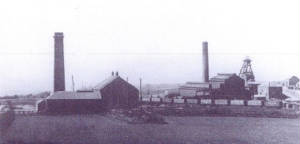
MOUNT MOOR COLLIERY
(sometimes known as Springwell Vale Pit)
Springwell Vale Pit was sometimes known as Mount Moor Colliery. It was opened in about 1825 by the
Marley Hill Coal Co. and was eventually owned by John Bowes and Partners. The colliery was on the edge of Shadon’s Hill, Black Fell, where one of the
most historic events in Durham mining history took place during a strike in 1844 when 40,000 miners from Northumberland and Durham gathered at a mass meeting of the Miners Association of Great Britain & Ireland to discuss a strategy to defeat the coal owners. The pit closed in May 1931. Part of its buildings and railway are now
owned by the Bowes Mining Museum. George Pritchard (1897)
started work at the colliery when he left Eighton Banks school at the age of 14.
"Link to George (Geordie) Pritchard, Miner"
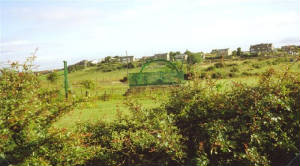
Site of the former Mount Moor Colliery
now owned by the Bowes Railway Museum
BLACKHOUSE COLLIERY (Birtley)
(NO PICTURE AVAILABLE)
Sometimes known as Birtley New Pit or Wash Houses Pit it was opened
in 1913 by the Birtley Iron Co. The pit closed the year after but was reopened again in 1920. Later owned by
the Pelaw Main Collieries Co. it finally closed in 1932. George
Pritchard (1897) worked at this colliery in 1920 shortly after finishing his service in the Royal Horse Artillery following
World War One.
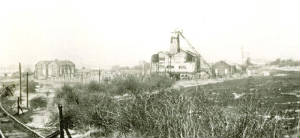
ALLERDENE SHOP PIT
(Ravensworth)
Ravensworth Shop Pit was opened in 1850 by W.W.
Burdon and later passed into the ownership of the Birtley Iron Co.
Prior to Nationalisation in 1947 the pit was owned by Pelaw Main Collieries Co. Ltd. The pit closed
in February 1962. George Pritchard (1897) worked at this colliery in the early 1930s as a surface worker.
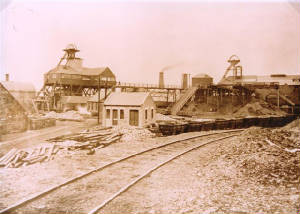
HARRATON COLLIERY
(Chester le Street)
There was mining at Harraton near Chester-le-Street in the seventeenth
century and workings were carried on by the Lambton family from the
early eighteenth century eventually being owned by Lambton, Hetton
and Joicey. A serious explosion happened in 1794 killing 28 miners and another 38 were killed in a further explosion in 1817. The 'Big' & 'Billy' shafts were near Nova Scotia giving the colliery the nickname 'Cotia'. Productivity declined
in the late 1950s when roof conditions were a serious problem. The colliery finally
closed in May 1965. Robert Pritchard (1868) worked at this colliery as a surface worker from the age of 65 until
he retired at 70 years of age.
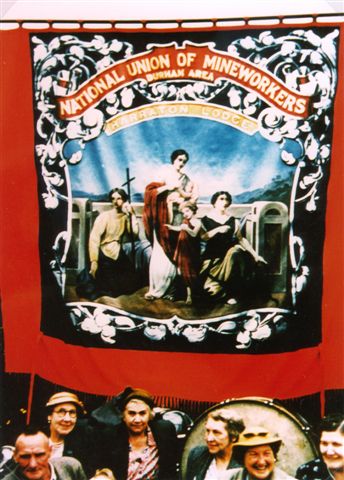
National Union of Mineworkers
Harraton Lodge Banner
|

